 Image 1 of 9
Image 1 of 9

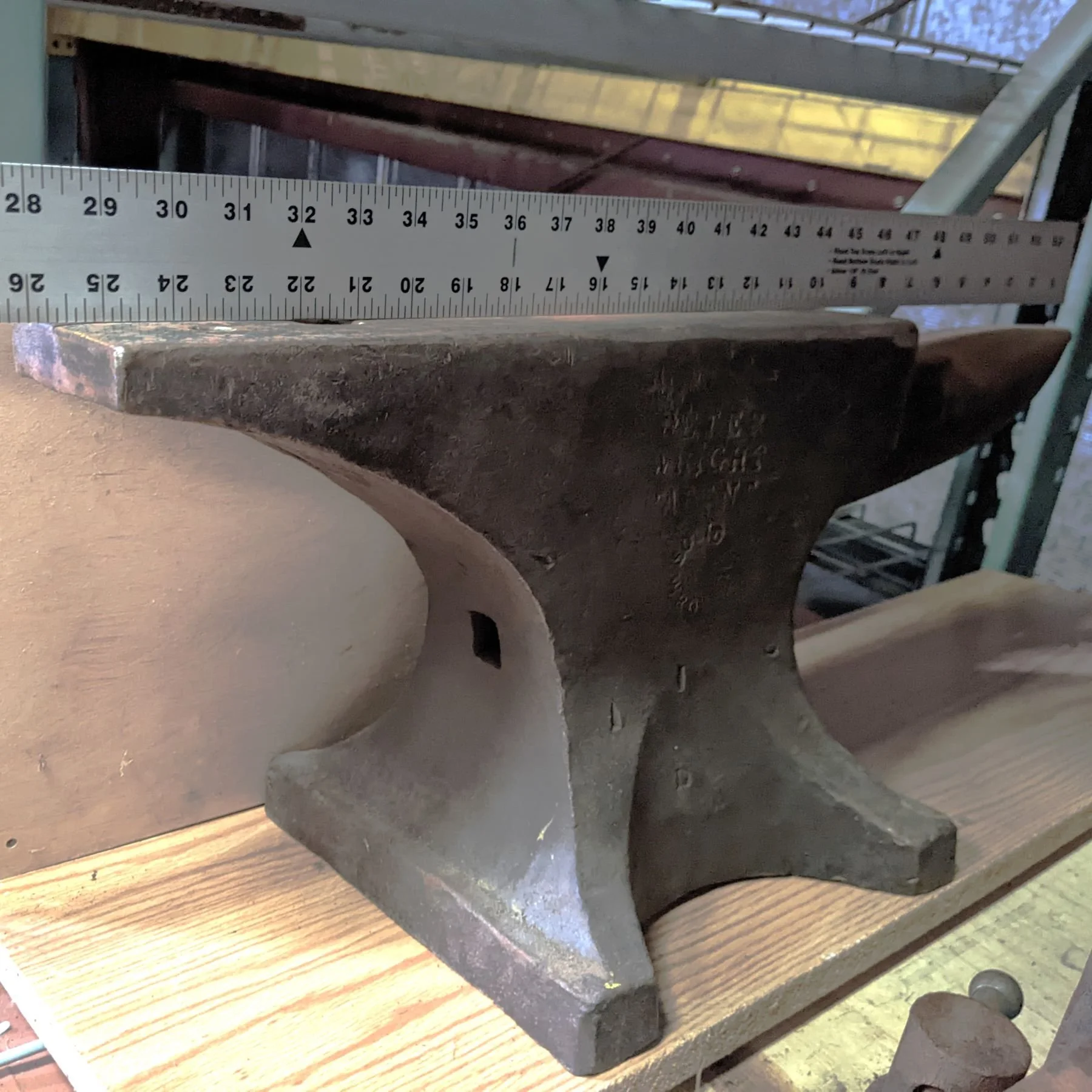 Image 2 of 9
Image 2 of 9

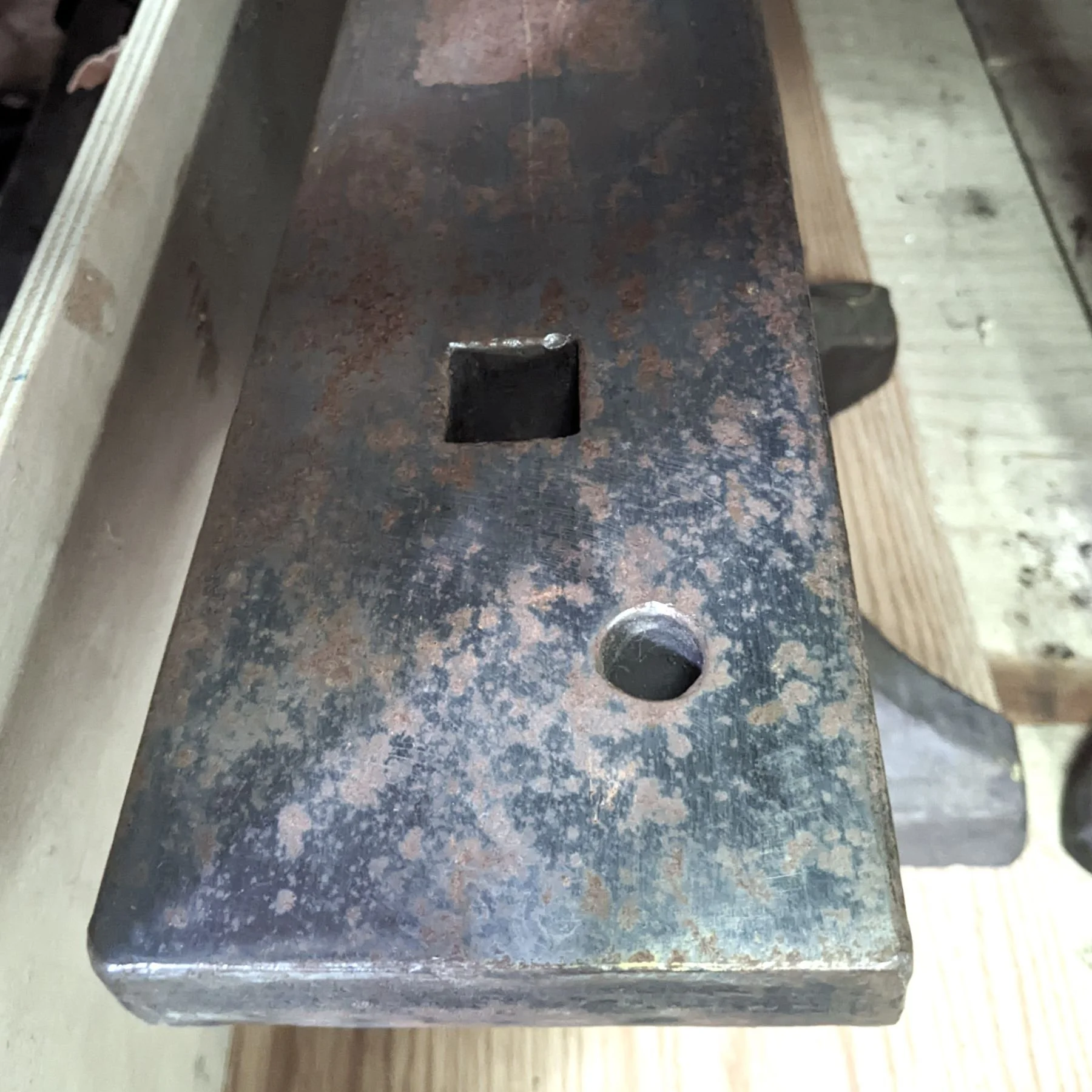 Image 3 of 9
Image 3 of 9

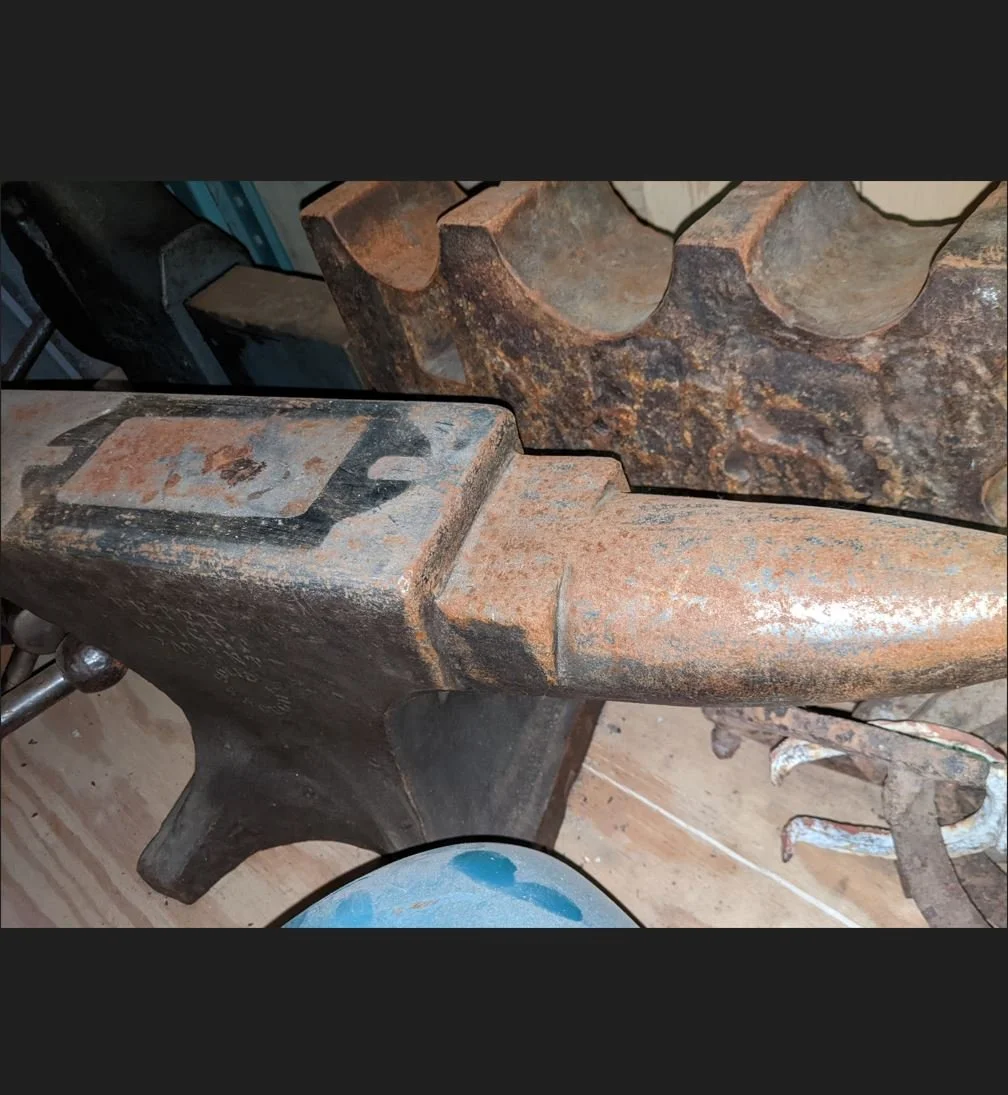 Image 4 of 9
Image 4 of 9

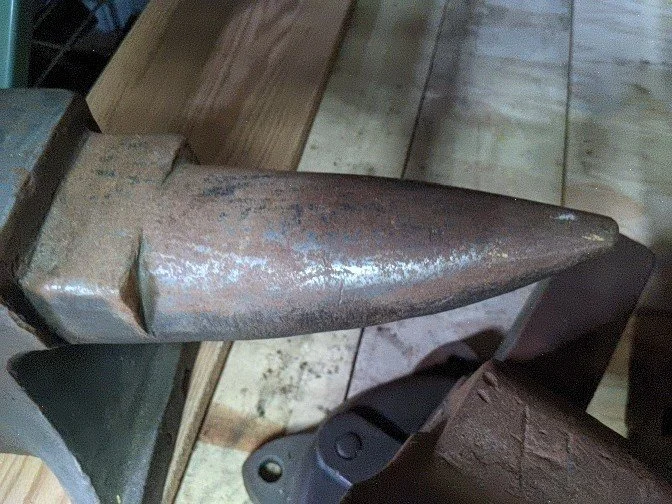 Image 5 of 9
Image 5 of 9

 Image 6 of 9
Image 6 of 9

 Image 7 of 9
Image 7 of 9

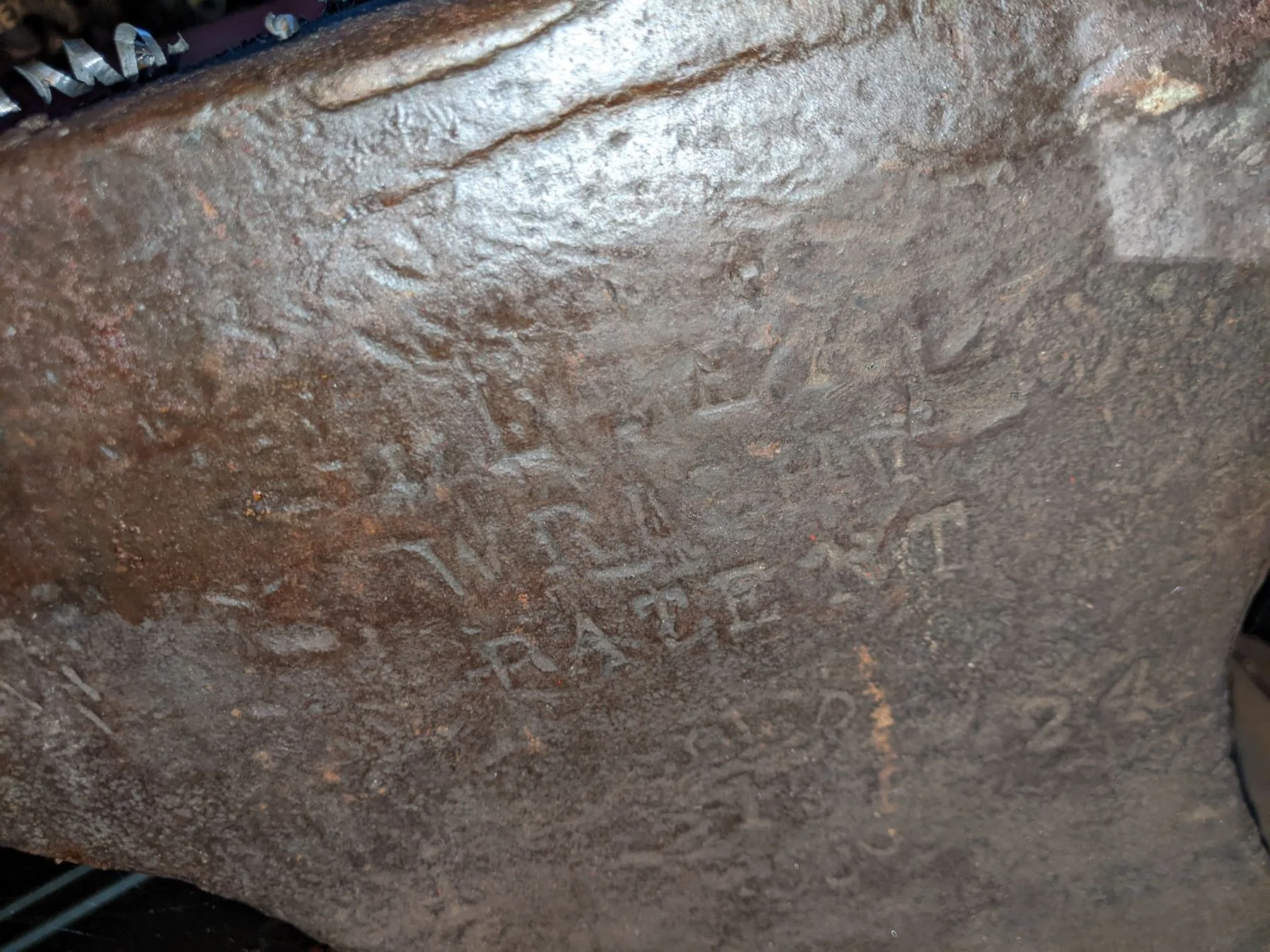 Image 8 of 9
Image 8 of 9

 Image 9 of 9
Image 9 of 9










Vintage Peter Wright Anvil
Peter Wright anvil produced in England before 1910. The insignia has the words Solid Wrought in a circular pattern below Peter Wright Patent. The anvil was made of wrought iron topped with a hardened steel plate about ½ inch thick. The number to the left of the insignia is 1, in the middle 1, and to the right it is 24. If that is right, the anvil weighs (weighed) 1 hundredweight (112 pounds) plus 1 tenths of a hundredweight (11 pounds) plus 24 pounds = 147 pounds.
This anvil is a beauty. The nice shiny photos were taken 10 years ago. The photos sporting a rusty patina is current. It has been in the Butler (not the container) and needs a bit of restorative care to get it back to the before pictures. Notice that there is no noticeable sway and the overall length is 26”.
Anvils are sold by the pound, generally, unless it is a collectors item. In the past, the anvil was extremely highly valued, as shoeing horses was a necessity. During war time, soldiers coming into enemy towns would go first to the blacksmith’s shop and knock the horn off the anvil. This doesn’t quite make sense because the invading army also had horses which would need shoes. Hmm.
Peter Wright anvil produced in England before 1910. The insignia has the words Solid Wrought in a circular pattern below Peter Wright Patent. The anvil was made of wrought iron topped with a hardened steel plate about ½ inch thick. The number to the left of the insignia is 1, in the middle 1, and to the right it is 24. If that is right, the anvil weighs (weighed) 1 hundredweight (112 pounds) plus 1 tenths of a hundredweight (11 pounds) plus 24 pounds = 147 pounds.
This anvil is a beauty. The nice shiny photos were taken 10 years ago. The photos sporting a rusty patina is current. It has been in the Butler (not the container) and needs a bit of restorative care to get it back to the before pictures. Notice that there is no noticeable sway and the overall length is 26”.
Anvils are sold by the pound, generally, unless it is a collectors item. In the past, the anvil was extremely highly valued, as shoeing horses was a necessity. During war time, soldiers coming into enemy towns would go first to the blacksmith’s shop and knock the horn off the anvil. This doesn’t quite make sense because the invading army also had horses which would need shoes. Hmm.
Peter Wright anvil produced in England before 1910. The insignia has the words Solid Wrought in a circular pattern below Peter Wright Patent. The anvil was made of wrought iron topped with a hardened steel plate about ½ inch thick. The number to the left of the insignia is 1, in the middle 1, and to the right it is 24. If that is right, the anvil weighs (weighed) 1 hundredweight (112 pounds) plus 1 tenths of a hundredweight (11 pounds) plus 24 pounds = 147 pounds.
This anvil is a beauty. The nice shiny photos were taken 10 years ago. The photos sporting a rusty patina is current. It has been in the Butler (not the container) and needs a bit of restorative care to get it back to the before pictures. Notice that there is no noticeable sway and the overall length is 26”.
Anvils are sold by the pound, generally, unless it is a collectors item. In the past, the anvil was extremely highly valued, as shoeing horses was a necessity. During war time, soldiers coming into enemy towns would go first to the blacksmith’s shop and knock the horn off the anvil. This doesn’t quite make sense because the invading army also had horses which would need shoes. Hmm.